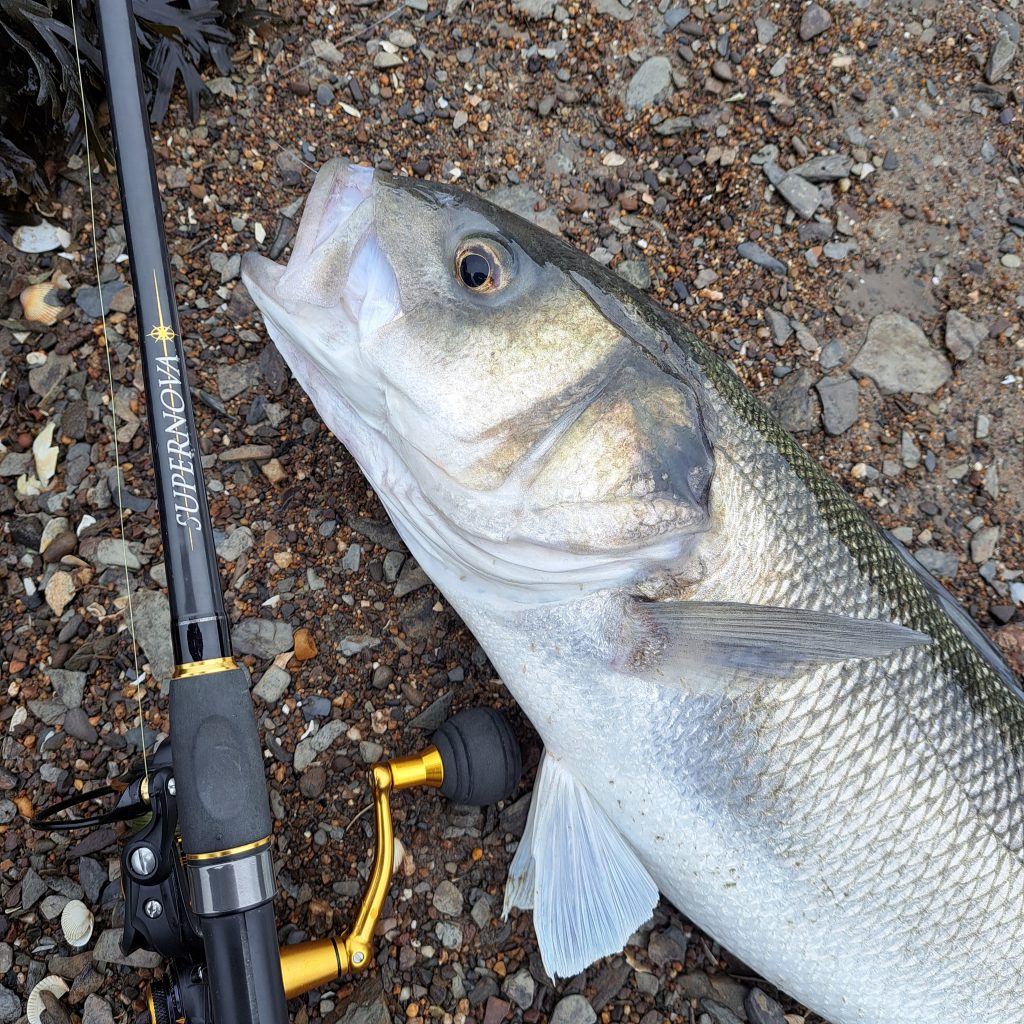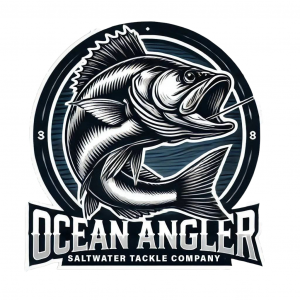Two 72cm Bass in One Hour — the day North Devon went quiet and the fish went big
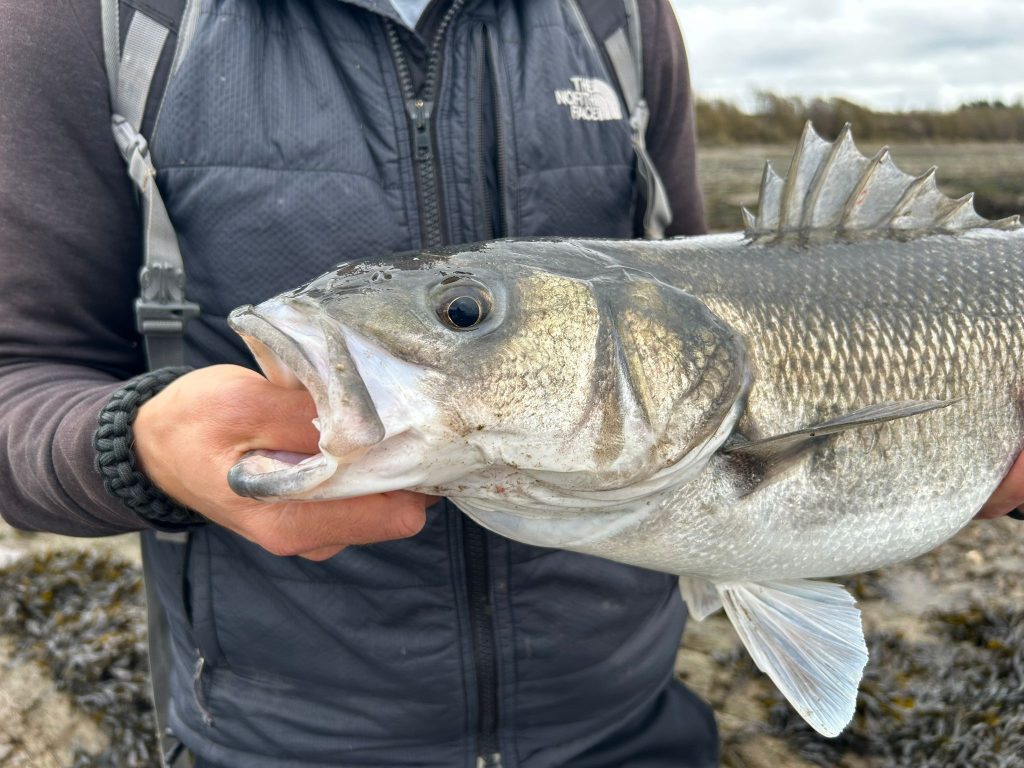
I’ll never forget that afternoon on the Taw — one of those sessions that stays with you for years. I’d taken my mate Andrew out, who’s only just getting into sea fishing, mainly to show him the ropes, help him with his casting, and hopefully get him connected to a few fish.
Not long in, Andrew asked, “Do you think it’s worth casting into the flow that’s ebbing out?” We’d just been talking about how the baitfish were hugging tight under the bladderwrack close to shore, and we’d even seen a few bass hitting fry in the shallows.
Now, as most estuary anglers know, casting slightly upstream and letting a soft plastic drift naturally while keeping contact with it can be deadly. I explained the feel — “You’ll feel it bump, bump along the bottom, and when one of those bumps feels different, that’s the fish.” But how do you describe that feeling to someone who’s never felt it before?
Andrew made his cast with a http://[Savage Gear Gravity Stick](https://www.veals.co.uk/product/savage-gear-gravity-stick-kit/ , and I watched the lure tick along the sandy bottom in barely two feet of water. Then I heard him say quietly, “Errr… Jase… I think I’ve got a fish on here.”
I dropped my rod instantly and ran over, half expecting a snag or maybe a small schoolie. But no — the borrowed Shakespeare GX2 spinning rod paired with a Shimano FX2500 was bent right over, pulsing with that unmistakable weight.
Moments later, a huge, dark-backed shape rolled near the surface. At first, I honestly thought he’d foul-hooked a smoothhound — we’ve seen them caught there before — but as it came closer, the truth hit me. A thick-set, heavy-shouldered bass, flared gill plates, dorsal spikes standing tall.
When it slid calmly into reach, we realised what he’d done — a magnificent 72cm bass, his very first specimen fish. Andrew was absolutely buzzing, speechless at first, then grinning ear to ear. He rang his missus straight away before heading off for the school run, still shaking with excitement. I’ve no idea how he managed to drive home.

After Andrew left, I stayed on for another half hour, still grinning at what had just happened. The mark felt alive, the tide had started to build, and something in me just knew there had to be another good fish sitting there.
I rigged up my Assassin Supernova 7ft3 Medium – Assassin Assassin Supernova Lure rod – Ocean Angler — a beautiful rod I’d imported from South Africa, purpose-built for casting light lures at big, wild fish. I clipped on a new-concept Bellybite lure in white, the same colour that had tempted Andrew’s fish, and began casting slightly upstream, working the flow carefully, keeping the lure ticking just above the bottom.
bellybitelures.com – New concept so please message Sean to discuss
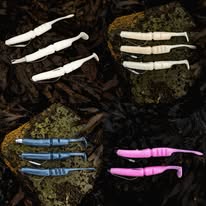
For the next thirty minutes I was in that zone — cast, drift, retrieve — feeling every touch through the braid, convinced another big fish was moving through. Then came a faint tap. Just a single, soft knock. Then another. I lifted the rod gently, and it locked solid.
At first the fish didn’t move much — just a heavy, dead weight — and then suddenly it came alive. The rod arched hard, drag ticking, the Assassin Supernova doing exactly what it was built to do. When the bass finally surfaced, it rolled and thrashed, throwing spray in the shallows. After a controlled but frantic minute or so, I guided it safely onto the sand.
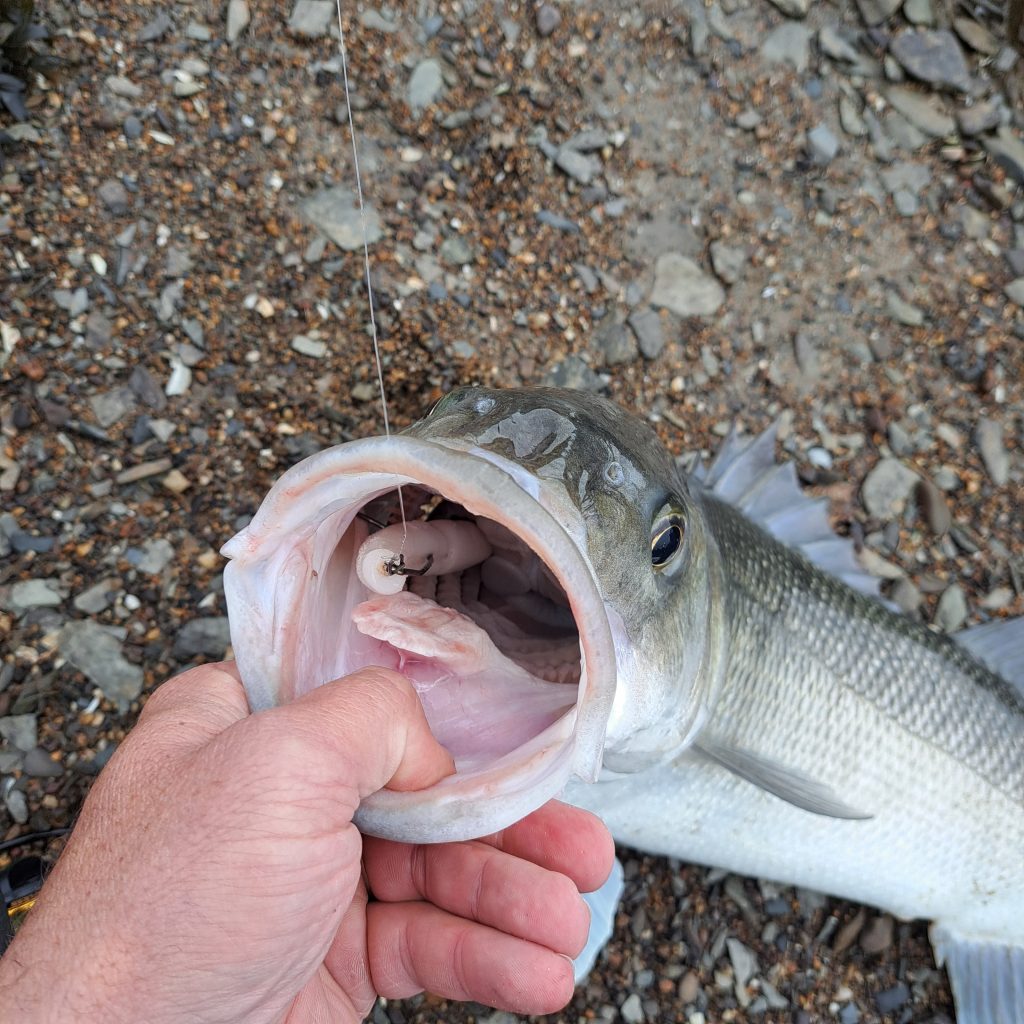
Another 72cm bass. Not quite as thick across the shoulders as Andrew’s, but still a proper specimen. I couldn’t believe it — two fish over 70cm, same spot, within half an hour. Epic doesn’t even come close.
I’ve been chasing another 70cm fish for three years, ever since my first one off the open coast. Even the boat trips this season, fishing reefs and wrecks, have topped out around 62cm — great sport, but not that magic 70 mark. So to find one from the shore again, and in the estuary, made it even more special.
After a quick measure and an unfortunately failed attempt at a photo (wet hands and a useless phone don’t mix), I did at least manage to capture a short release video. The bass kicked strongly and powered back into the current — exactly how it should end.
Below I’ve written the full account and — because a lot of anglers ask — I’ve checked the environmental details for that afternoon (tides, moon phase and pressure) so you can see why that mark might have produced such a pair of specimens.
The environmental picture for 22 Oct 2025 at ~14:30 (Taw / Barnstaple area)
Tide: Barnstaple (Taw estuary) had a low tide around 13:03 BST on 22 October 2025 with the next high predicted in the evening (highs that day were around 07:11 and 19:25 with lows ~01:03 and 13:03 on the 22nd). That places 14:30 roughly an hour-and-a-half after low water and during the early flood (rising) tide moving toward the evening high. Fishing an incoming tide after low slack can concentrate baitfish and make predators move in and feed, especially around structure and channels.
Moon / lunar influence: The moon was essentially at the new-moon phase around 21–22 October 2025 (the new moon occurred on 21 Oct 2025 at ~12:25 UTC), so by the afternoon of the 22nd the moon was barely illuminated (a very young waxing crescent / effectively just after new moon). That means tidal ranges were close to spring-tide strength around that period and light at night was minimal — conditions often associated with stronger tidal flows and more concentrated feeding windows around the change of tide.
Barometric pressure & weather: Observations for the Barnstaple / Chivenor area that week show relatively low pressure systems in the area (pressures around ~1000–1004 mbar in the mid-day period for the days surrounding 22 Oct). Lower pressure plus blustery/windy conditions were present across the SW that week — conditions that often stir up bait, create coloured water near structure, and encourage predator activity. (Hourly historical observations and station records for Barnstaple/Chivenor show barometer readings in the ~1000–1004 mbar band around mid-day that week).
Why those conditions can produce big bass (short analysis)
- Incoming tide after low water — just after low slack, the flood brings water up through channels and over shallow banks; it’s a prime time for bait to be pushed into holding/feeding areas and for bass to ambush. The fact you were fishing roughly an hour after low (14:30, low ~13:03) is consistent with a strong early-flood window when predators are actively working.
- Strong tidal range around new moon — new moon / spring tide periods produce stronger flows and larger tidal movement. That increases water movement over features, improving bait movement and concentrating fish. The lunar timing (new moon on 21 Oct) means the 22nd was still within the stronger-tide window.
- Lowish pressure and wind — lower pressure and blustery weather can stimulate feeding and move baitfish from exposed to sheltered zones. Wind direction and gusts also change how bass position themselves relative to structure; your mark clearly benefited from whatever local current and wind combination was present that afternoon.
- Same mark producing two big fish quickly — when conditions line up (structure, tidal flow, bait in the area) it’s not unusual to see multiple specimen fish move through a feed zone in quick succession, especially on a rising tide. Tough to beat when the fish show and the tide sets up a feed.
Practical notes for anglers who want to learn from this session
- Fish the early flood after low slack at estuary mouths and channel edges — that window is often very productive. (In our case that was the hour after low at ~13:03, we were fishing at ~14:30 and the fish showed).
- On new-moon / spring-tide windows expect stronger flows and plan baits/weight accordingly so your lure or bait is in the strike zone.
- Don’t move the moment you have one fish — if the mark is holding bait and the tide is turning there’s a chance more fish will follow through. In our case one mate caught his 72cm and half an hour later I had one too from the same spot — patience paid off.
- Keep a log of tide times and local weather for your marks — patterns build over time and repeat more often than you’d think.
Final thoughts
Two 72cm bass in the same mark within half an hour felt surreal. For my mate it was a proper first-specimen moment — the kind of day that hooks you to the sport for life. The environmental picture (low water, rising flood, new-moon tidal strength and lively conditions) all stacked in the fish’s favour that afternoon. North Devon rewarded patience and being in the right place at the right time.
